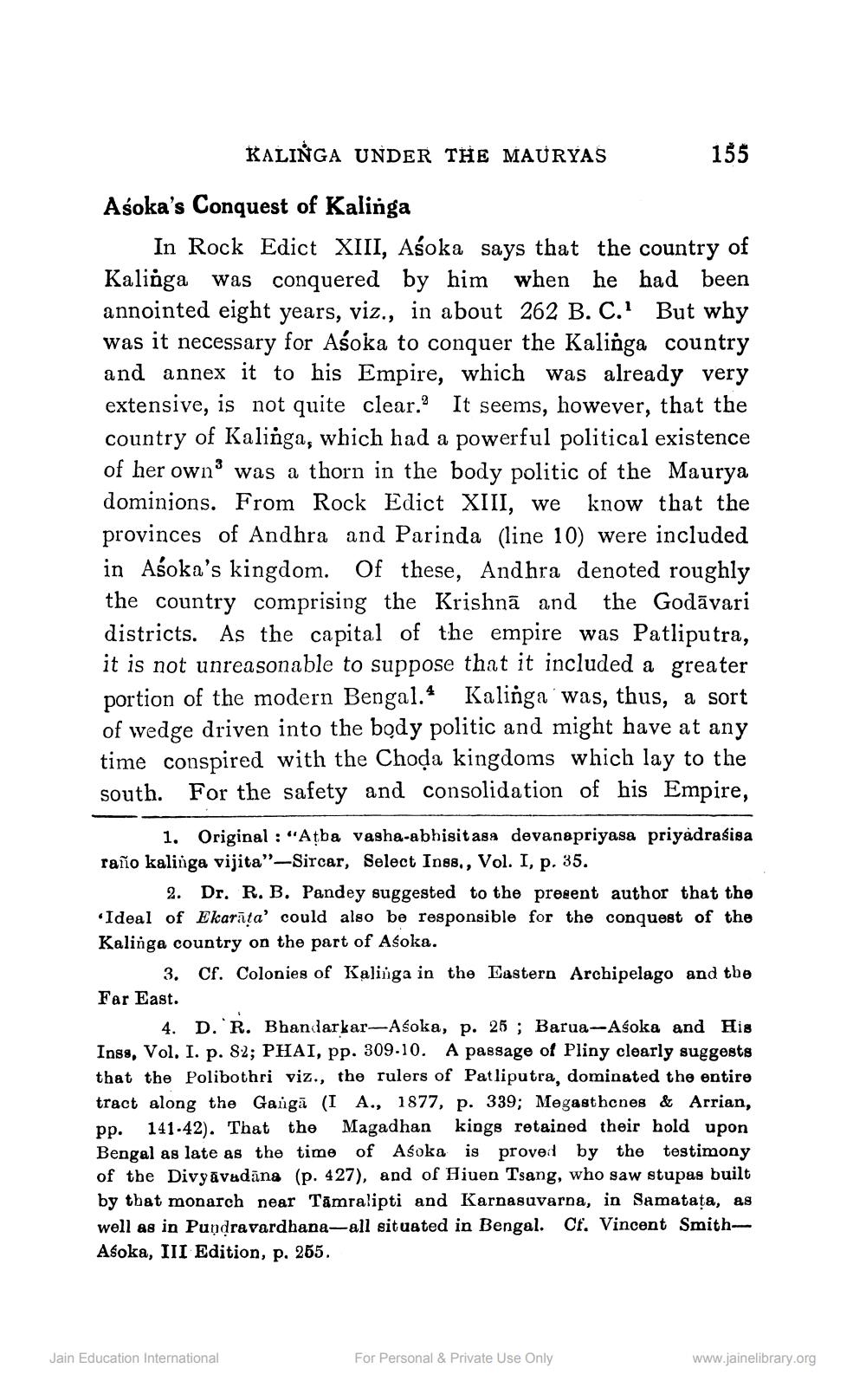________________
KALINGA UNDER THE MAURYAS
155
Asoka's Conquest of Kalinga
In Rock Edict XIII, Aśoka says that the country of Kalinga was conquered by him when he had been annointed eight years, viz., in about 262 B. C.' But why was it necessary for Asoka to conquer the Kalinga country and annex it to his Empire, which was already very extensive, is not quite clear. It seems, however, that the country of Kalinga, which had a powerful political existence of her own was a thorn in the body politic of the Maurya dominions. From Rock Edict XIII, we know that the provinces of Andhra and Parinda (line 10) were included in Aśoka's kingdom. Of these, Andhra denoted roughly the country comprising the Krishnā and the Godāvari districts. As the capital of the empire was Patliputra, it is not unreasonable to suppose that it included a greater portion of the modern Bengal. Kalinga' was, thus, a sort of wedge driven into the body politic and might have at any time conspired with the Choda kingdoms which lay to the south. For the safety and consolidation of his Empire,
1. Original : “Atba vasha-abhisitasa devanapriyasa priyadrasisa raño kalinga vijita"-Sircar, Select Inss., Vol. I, p. 35.
2. Dr. R. B. Pandey suggested to the present author that the Ideal of Ekarāta' could also be responsible for the conquest of the Kalinga country on the part of Asoka.
3. Cf. Colonies of Kalinga in the Eastern Archipelago and the Far East.
4. D. R. Bhandarkar-Asoka, p. 25 ; Barua--Asoka and His Inse, Vol. I. p. 82; PHAI, pp. 309.10. A passage of Pliny clearly suggests that the Polibothri viz., the rulers of Patliputra, dominated the entire tract along the Gangā (I A., 1877, p. 339; Megasthenes & Arrian, pp. 141.42). That the Magadhan kings retained their hold upon Bengal as late as the time of Asoka is proved by the testimony of the Divyāvadāna (p. 427), and of Hiuen Tsang, who saw stupas built by that monarch near Tāmralipti and Karnasuvarna, in Samatata, as well as in Pundravardhana-all situated in Bengal. Ct. Vincent SmithAsoka, III Edition, p. 255.
Jain Education International
For Personal & Private Use Only
www.jainelibrary.org




